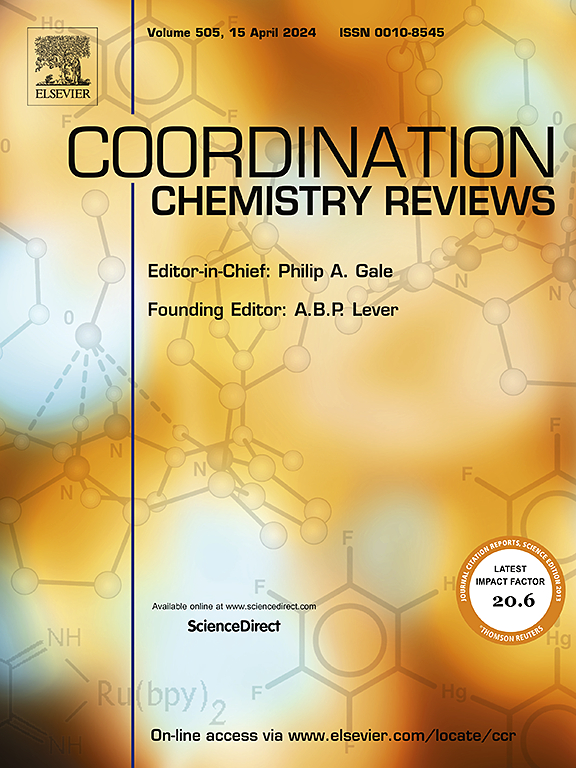用于肿瘤传感和治疗的反应性生物材料
IF 23.5
1区 化学
Q1 CHEMISTRY, INORGANIC & NUCLEAR
引用次数: 0
摘要
越来越多的智能生物材料由于其自我修复能力、对复杂环境的适应性和对外部刺激的响应性而在生物医学应用中引起了极大的关注。这些特性使这些材料能够在复杂的生物环境中表现出随需应变的智能。具体来说,对于能够自主响应肿瘤微环境(tumor microenvironment, TME)的特定物理化学性质以及其中的生物活性分子或功能性生物大分子的智能生物材料,迫切需要系统地总结其固有的结构优势和TME的独特特性。本文综述了反应性生物材料,包括无机、有机和有机-无机杂化生物材料。本文通过分析生物材料的表面活性位点、官能团、分子构型等相关特征,阐述了生物材料的结构特征、化学反应性及其对TME复合物的适应性之间的构效关系。此外,还讨论了智能设计和优化策略,以提高响应性生物材料在复杂生物环境中的实用性。我们期望这篇综述将有助于研究人员对反应性生物材料有更深入的了解,并促进开发更有效和先进的多功能肿瘤生物成像、生物传感和疾病治疗工具。本文章由计算机程序翻译,如有差异,请以英文原文为准。
Responsive biomaterials for tumor sensing and therapy
An increasing number of smart biomaterials have garnered significant attention in biomedical applications owing to their self-repair capabilities, adaptability to complex environments, and responsiveness to external stimuli. These properties enable these materials to exhibit on-demand intelligence in intricate biological settings. Specifically, for smart biomaterials that autonomously respond to the specific physicochemical properties of the tumor microenvironment (TME) as well as bioactive molecules or functional biomacromolecules within it, a systematic summary of their inherent structural advantages and the unique characteristics of the TME is urgently needed. This review focuses on responsive biomaterials, encompassing inorganic, organic, and organic-inorganic hybrid biomaterials. By analyzing their surface-active sites, functional groups, molecular configurations, and other relevant characteristics, this review aims to elucidate the structure-activity relationship between the structural features of responsive biomaterials, their chemical reactivity, and their adaptive responsiveness to the complex TME. Additionally, intelligent design and optimization strategies are also discussed to enhance the practicality of responsive biomaterials in complex biological environments. We anticipate that this review will assist researchers in gaining a deeper understanding of responsive biomaterials and facilitate the development of more effective and advanced multifunctional tools for tumor bioimaging, biosensing, and disease therapy.
求助全文
通过发布文献求助,成功后即可免费获取论文全文。
去求助
来源期刊

Coordination Chemistry Reviews
化学-无机化学与核化学
CiteScore
34.30
自引率
5.30%
发文量
457
审稿时长
54 days
期刊介绍:
Coordination Chemistry Reviews offers rapid publication of review articles on current and significant topics in coordination chemistry, encompassing organometallic, supramolecular, theoretical, and bioinorganic chemistry. It also covers catalysis, materials chemistry, and metal-organic frameworks from a coordination chemistry perspective. Reviews summarize recent developments or discuss specific techniques, welcoming contributions from both established and emerging researchers.
The journal releases special issues on timely subjects, including those featuring contributions from specific regions or conferences. Occasional full-length book articles are also featured. Additionally, special volumes cover annual reviews of main group chemistry, transition metal group chemistry, and organometallic chemistry. These comprehensive reviews are vital resources for those engaged in coordination chemistry, further establishing Coordination Chemistry Reviews as a hub for insightful surveys in inorganic and physical inorganic chemistry.
 求助内容:
求助内容: 应助结果提醒方式:
应助结果提醒方式:


